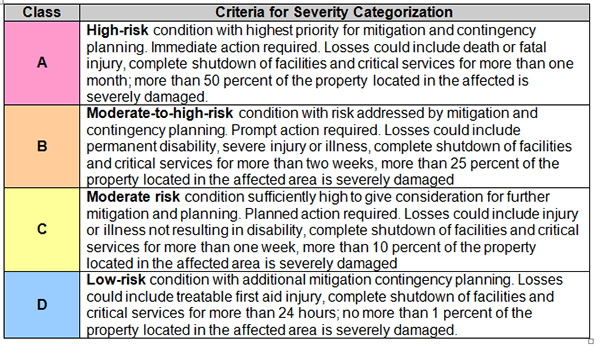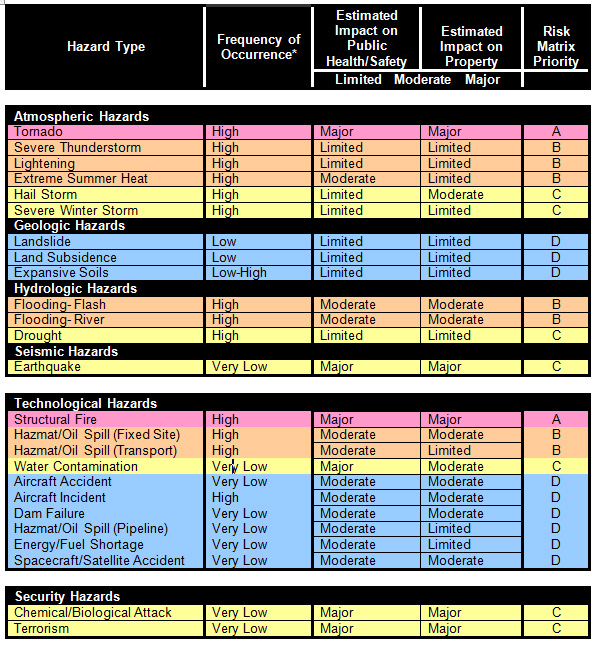By Mark Wallace
Whenever a situation is thought to be an emergency or perhaps even a disaster and it’s not a crime, people think, “who am I gonna call?” Dial 911 and the fire service will arrive on the scene and will be expected to successfully handle the situation. Being consistently successful at resolving the incidents the fire service faces just doesn’t happen; it takes planning, preparation, training, practice, the right tools, and the right equipment, among other attributes, to be consistently successful.
Each community contains a unique set of hazards and vulnerabilities. Webster’s defines hazard as, “to expose to chance; to put in danger of loss or injury; to run a risk or danger.” Hazards within a community can be thought of as those locations having potentially negative or even catastrophic impacts on people and property. Target hazards are those hazards with the greatest potential for the loss of life and those locations with the greatest negative impact to the community.
Vulnerability is the likelihood of being injured or damaged or open to attack.2 Community vulnerability is a consideration for the likelihood of a particular hazard having an incident that injures people or damages the property within your community. Hazards and vulnerabilities within a community are evaluated by conducting a community risk assessment.
Community Risk Assessment
Risk can be thought of as the possibility of loss or injury, the exposure to the change of loss, and the probability of an even multiplied by the significance of the consequences (impact) of the event (risk = probability × impact). Community risk assessment is a process or application of a method that evaluates risk as defined by probability and frequency of occurrence of a hazard event, exposure of people and property to the hazard, and consequences of that exposure.
One recommended risk assessment methodology a fire officer can follow is the “Risk Matrix Approach”3 developed by Arthur D. Little. The Risk Matrix Approach recognizes risks, evaluates the frequency of those risks, relates the magnitude of consequences or potential losses, and determines the appropriate measures for prevention or reduction of these risks.
Figure 1. The Risk Matrix Approach Model4
The Risk Matrix Approach includes the following continuous steps (see Figure 1):
- Identify and characterize hazards: Define and describe hazards, measures of magnitude and severity, causative factors, and interrelations with other hazards.
- Screen risk: Rank the identified hazards as a function of the relative degree of risk.
- Estimate risk: Apply the methodology to evaluate risk.
- Assess acceptability: Determine whether or not the risks that have been identified and estimated can be tolerated.
- Develop alternatives to reduce risk: Select cost-effective actions to reduce or mitigate unacceptable risks, including technological and management controls.
- Implement necessary mitigation measures, control, and review: Implement mitigation measures to control risks to acceptable levels.
- Control and review: Periodically monitor and review risks.
Hazard Identification and Associated Risk
Technological and natural hazard events can occur to various degrees. Defining categories for a risk matrix and specifically for severity categories is a catalyst for hazard definition.5
Table 1. Criteria for Hazard Frequency Categorization6
Criteria for Severity Categorization
The magnitude or severity of a hazard is rated in categories ranging from “catastrophic” to “minor” (see Table 3). The Risk Matrix Approach assigns a qualitative measure to the magnitude and frequency of occurrence of a hazard that permits the prioritization of risk among multiple hazards (see Table 4). An example of the Risk Matrix Approach is included in Table 5 from the McKinney (TX) Fire Department.
Table 2. Criteria for Severity Categorization7
Table 3. Risk Matrix Hazards Prioritization8
Table 4. McKinney (TX) Fire Department Hazards Ranked Using the Risk Matrix Approach9
Each fire department should complete a hazard and vulnerability analysis with its emergency management authority and law enforcement partners using the above process for its community. Then, it should set priorities and complete actions using the standards for preparation, planning, training, exercising, and evaluation of the community’s readiness for face the next disaster. The challenge will always not knowing which hazard we will face next and when we will face it.
REFERENCES
- McKechnie, Jean L., editor. Webster’s New Twentieth Century Dictionary of the English Language, unabridged. The World Publishing Company, 1972, p. 833.
- McKechnie, editor. p. 2051.
- Little, Arthur D. “Multi Hazard: The Risk Matrix Approach.” Cambridge, MA: FEMA, 1993.
- Ibid.
- Ibid.
- Ibid.
- Ibid.
- Ibid.
- Office of Emergency Management. “Hazard and Vulnerability Plan”. McKinney (TX) Fire Department.
 Mark Wallace (MPA, EFO, CFO, FIFireE) is the author of Fire Department Strategic Planning: Creating Future Excellence. He is the former State Fire Marshal of Oregon and a former chief in Colorado and Texas. He currently operates Fireeagle Consulting (www.fireeagleconsulting.com). He wrote the planning chapter in the 7th edition Fire Chief’s Handbook, which was released in fall 2014.
Mark Wallace (MPA, EFO, CFO, FIFireE) is the author of Fire Department Strategic Planning: Creating Future Excellence. He is the former State Fire Marshal of Oregon and a former chief in Colorado and Texas. He currently operates Fireeagle Consulting (www.fireeagleconsulting.com). He wrote the planning chapter in the 7th edition Fire Chief’s Handbook, which was released in fall 2014.






